My first issue of Sidetracked magazine as editor: a learning curve, ice bears, and that Gucci cover
Our best issue yet, and my first at the helm, but one not without controversy.
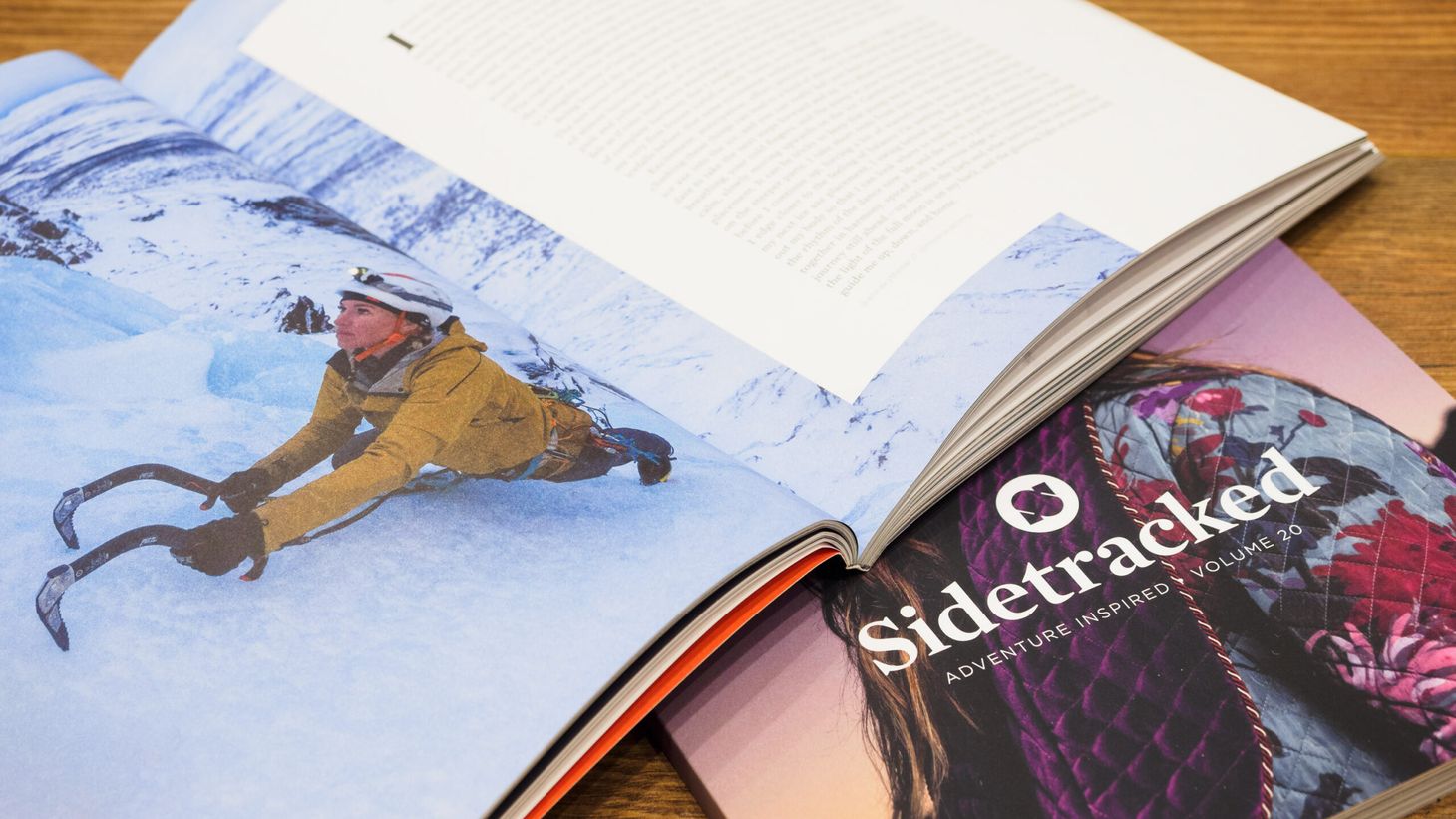
This week, my copies of Sidetracked Volume 20 landed on my doormat. Although I’ve been on the editorial team for several years now, this issue is a special one for me, because it’s the first issue with my name listed as editor on the masthead. Here’s a bit about this very special issue — and my take on the controversy surrounding it.
My history with Sidetracked extends back to March 2015. The magazine had only launched its print journal the year before, and the team was looking to expand. John Summerton (the magazine’s founder and the creative driving force behind it ever since) had hired Andrew Mazibrada to edit the print journal. Andrew and I had already worked together on a series of successful sci-fi anthologies, so he invited me to come on board as sub-editor. It was my first significant break in a new editorial career.
One of the reasons why Sidetracked has proven so successful is that our small team has always worked so well together. John has connections, creative vision, incredible design skills, and the organisational and business know-how to keep the whole thing going, and Andrew has always been a bit of a wizard when it comes to stories, with a remarkable knack for drawing out meaningful, focused narratives and working wonders with source material. My skill, at least initially, was in the details: tightening prose, applying a coherent style guide, zapping errors. Andrew and I complemented each other’s editorial style extremely well — it’s a working relationship honed over countless projects. Martin Hartley’s expert photographic vision ensures that the visual standard remains at the very highest level. And I mustn’t forget the extended team, including Daniel Neilson, Tom Hill, Emily Hopcian, and most recently Jenny Tough, all of whom have played a critical role in bringing the magazine to life.
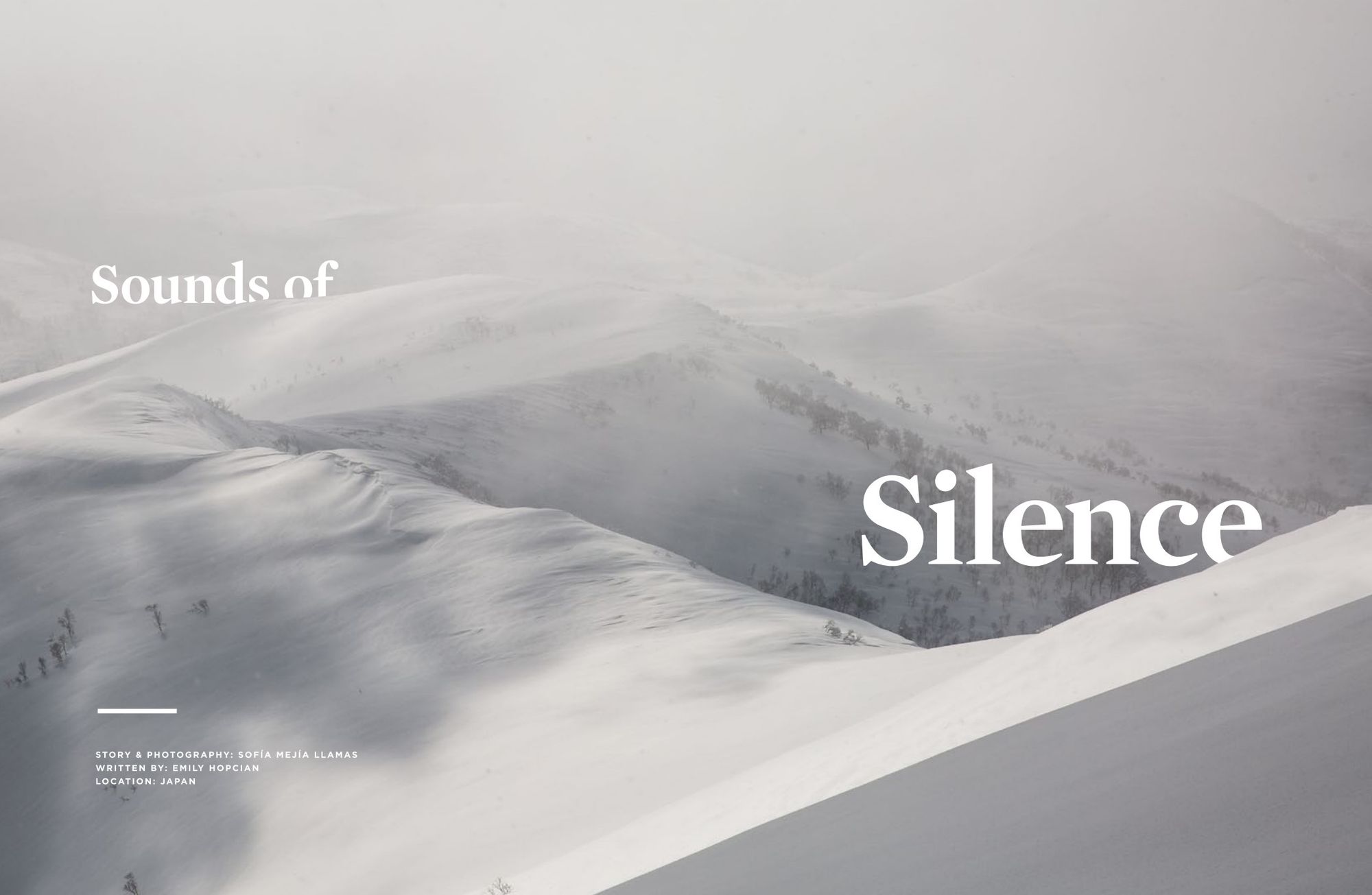
Over the years, my role has gradually expanded to take on a few more of the story-honing aspects as required. Sometimes that’s meant tackling the first edit of a project, or offering a second opinion on a story Andrew was struggling with. I do a lot of structural editing for private clients, so this is something I’ve become good at. Gradually I reached the point where I became confident I could take a story from pitch to printed feature.
When Andrew decided to step down to focus on his busy academic career, John was understandably cautious not to upset a happy equilibrium. Andrew recommended that I take on his role, and John agreed; I was of course delighted. By that point I had already stepped in as interim editor for The Great Outdoors magazine a couple of times, as well as my gradually expanded role at Sidetracked, and I was looking to increase my hours, so I thought the time was right. We agreed that Volume 20 would be my first at the helm.
The stories in Volume 20
I can’t remember at what point I realised that this one would be the best we had ever done, but by the time I came to proofread the final PDF I knew it for sure.
Visually, there are a few stories that set the bar extremely high. ‘Sounds of Silence’ by Sofía Mejía Llamas (written by Emily Hopcian) is one such story. It’s a feature about ski mountaineering in Japan, and the images are remarkable in their minimal simplicity: snow scenes of purest white that complement the beautiful prose.
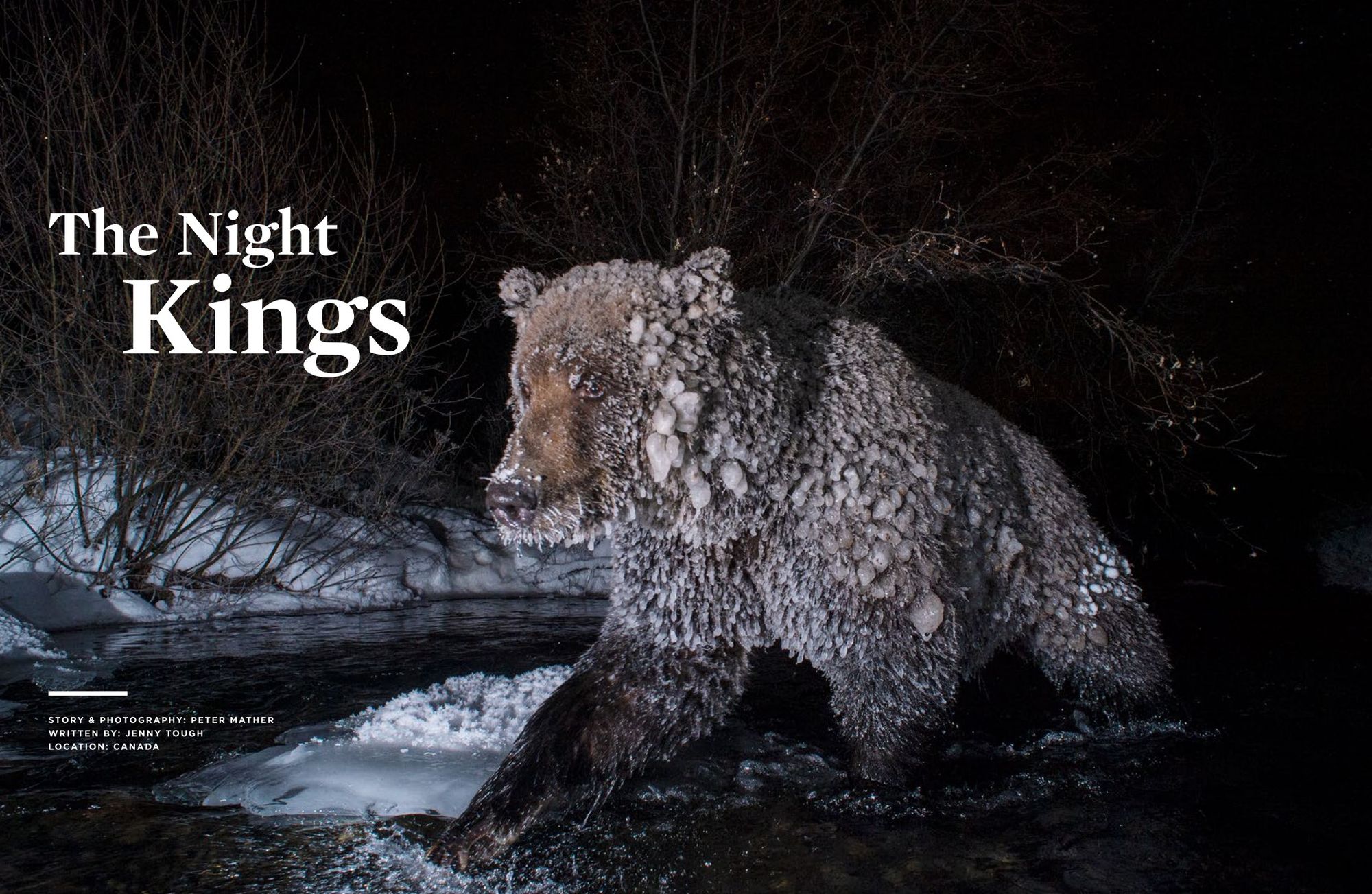
‘The Night Kings’ by Peter Mather is another piece with great visual power. This wildlife photographer has spent years photographing the legendary ice bears of the Yukon — grizzlies that wake in the winter to feast on the salmon of the Kluane River, and their coats become encased in ice due to standing in the river all day scooping fish out of the waters. The images Peter Mather provided were mostly shot with sophisticated camera traps and are some of the most remarkable wildlife images I have ever seen, showing powerful ice-glazed grizzly bears in their natural habitat. It’s also a story about climate change. Salmon numbers are down, and the grizzlies are struggling.
What about the writing itself? Again, the standard is high across the board, but for me there are a few highlights. The first is ‘Adrenaline & Chocolate’ by Fredrika Ek. She tells the story of crossing a high-altitude pass in the Andes on a bike during a long-distance cycle tour around the world, and her exhaustion, her determination, come through in the rhythm of the prose — you can feel the drumbeat of her pedal strokes in the internal monologue itself. There’s also ‘Harmony’, a Single Moment by Elin Skyttedal. It’s a short, simple piece about excitement, anticipation, effort, precision, and the dance of steep ice. Finally, I really admired ‘Borderline’ by Ashley Parsons. Another cycling piece, this one’s simple enough at first glance, but the writer has a masterful command of themes and layers, playing with concepts of borders and kinship. All of these pieces are case studies in adventure and travel writing; all were a pleasure to edit.
The learning curve
For Volume 20, our core team was John Summerton, myself, and Jenny Tough. We had to find a new equilibrium. The pandemic made no difference; Sidetracked has always been 100% remote anyway, although we did begin a new practice of setting up weekly Zoom meetings on Monday afternoons, and this really helped with communication and planning.
The first new thing for me was the process of commissioning: examining incoming pitches, and figuring out which ones to commission for the magazine. Somewhat unusually, at Sidetracked this is a team process, with commissioning decisions made jointly between John and the editor (with significant input from Jenny). This was the first time I’d had to think about commissioning. Previously, work had landed on my desk already agreed, and all I had to do was whip it into shape; now I had to consider queries and help make decisions.
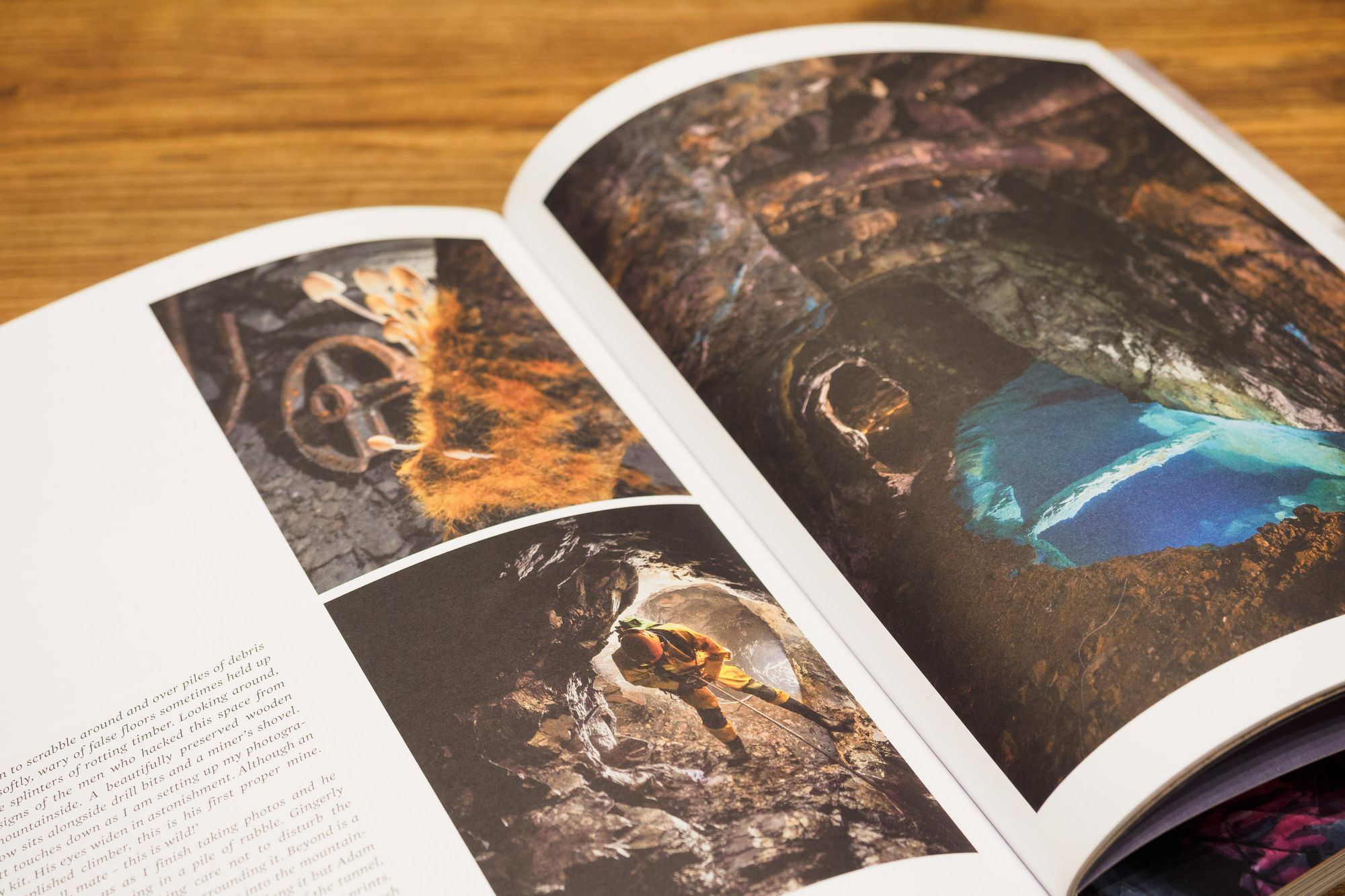
This required some adjustment. Another reason behind Sidetracked’s success is focus. We are focused on the very highest quality, and this means that, unfortunately, we turn down many good stories — and many excellent stories that don’t come with good enough photography. Lesson number one: a moderately good story idea with superb images is better than a superb story idea with moderately good images. Note careful use of the word idea. The reality is that a skilled editor can work wonders with an idea that has potential, no matter the level of the writer’s ability or experience, but there’s nothing you can do if the accompanying photography isn’t up to scratch. I’m a freelance writer and photographer myself, so it’s interesting to see things from this side.
We had to look at the overall shape of the issue, of course: ensuring that there weren’t too many stories about ice climbing or mountaineering or wildlife photography, aiming to offer a platform for a diverse range of contributors, representing a variety of different geographical locations — and all while keeping quality right at the top. Although Jenny and I both provided input here, this was primarily John’s role.
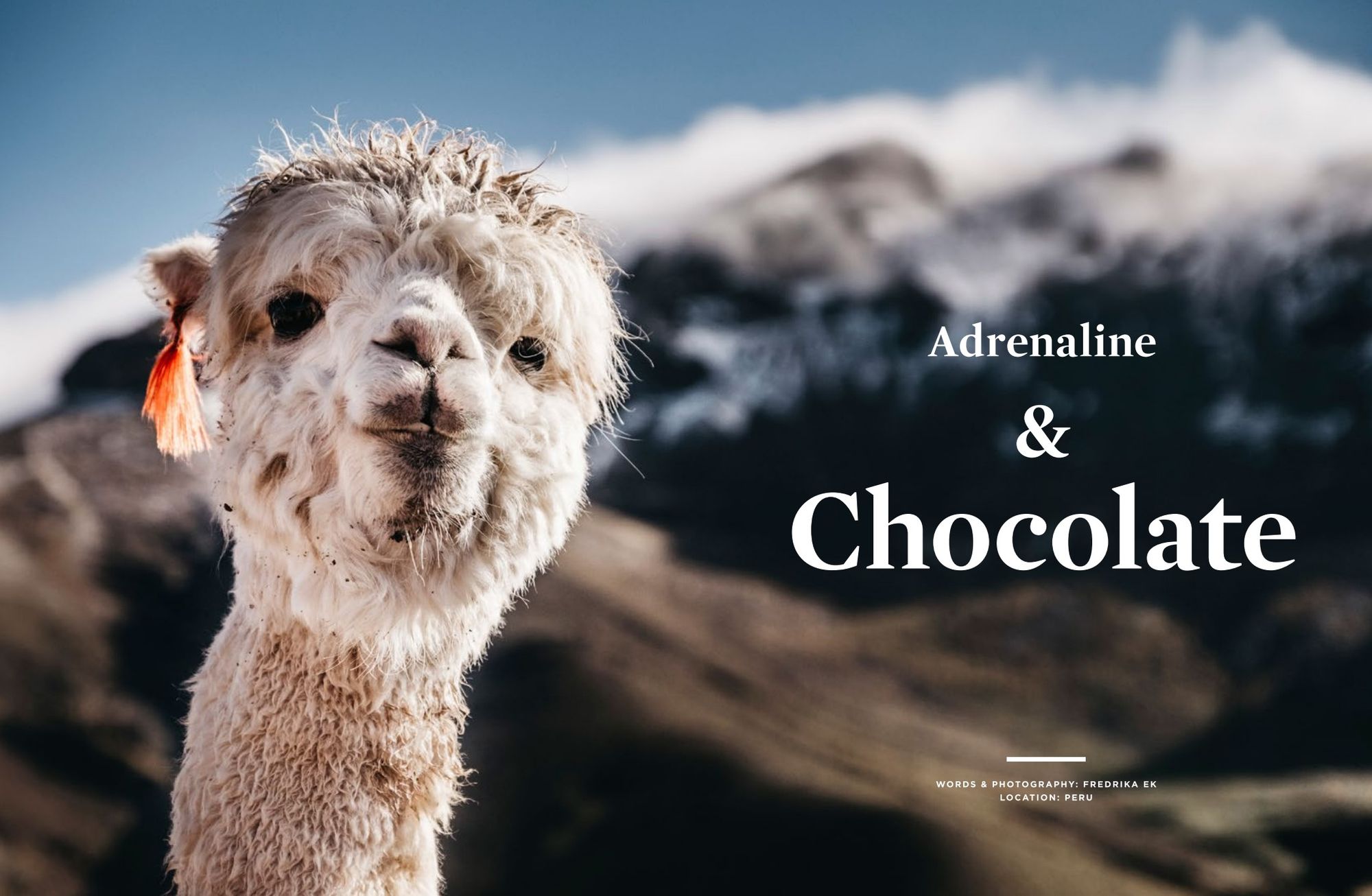
The second thing that required adjustment was the workflow itself. For Volume 20 we worked with two freelance sub-editors, Hugh Collins and Ben Lerwill. With the main editorial role so new to me, I wasn’t yet sure what level of editorial assistance I both needed and was comfortable with, although I knew that it certainly would not be at the same level I provided for Andrew when I was sub-editor. The balance that we ended up with was Hugh and Ben acting as proofreaders, but not providing much in the way of more detailed editorial intervention. We may change this balance in future as I settle into the role and I figure out what I’m comfortable delegating. To a large extent this depends on working relationships; Andrew and I struck a harmonious balance on Sidetracked thanks to our lengthy working history and personal friendship, and I’m not sure if that will be possible in future, or if it’s even needed any more. We’ll see! This is no reflection on Hugh or Ben — I’m indebted to both for their assistance, but I had not worked with either before, and editorial work on a project like this can be surprisingly intimate and depend on a deep degree of trust.
Another thing to get used to was the fact that Sidetracked’s style guide existed mostly in a disorganised Markdown file on my own server (and in my head), and was not fit for collaborative work. Hugh and Ben had to work from an out-of-date version of the style guide we’d hastily shoved on Google Docs. We’ll be getting something more formal sorted for next time.
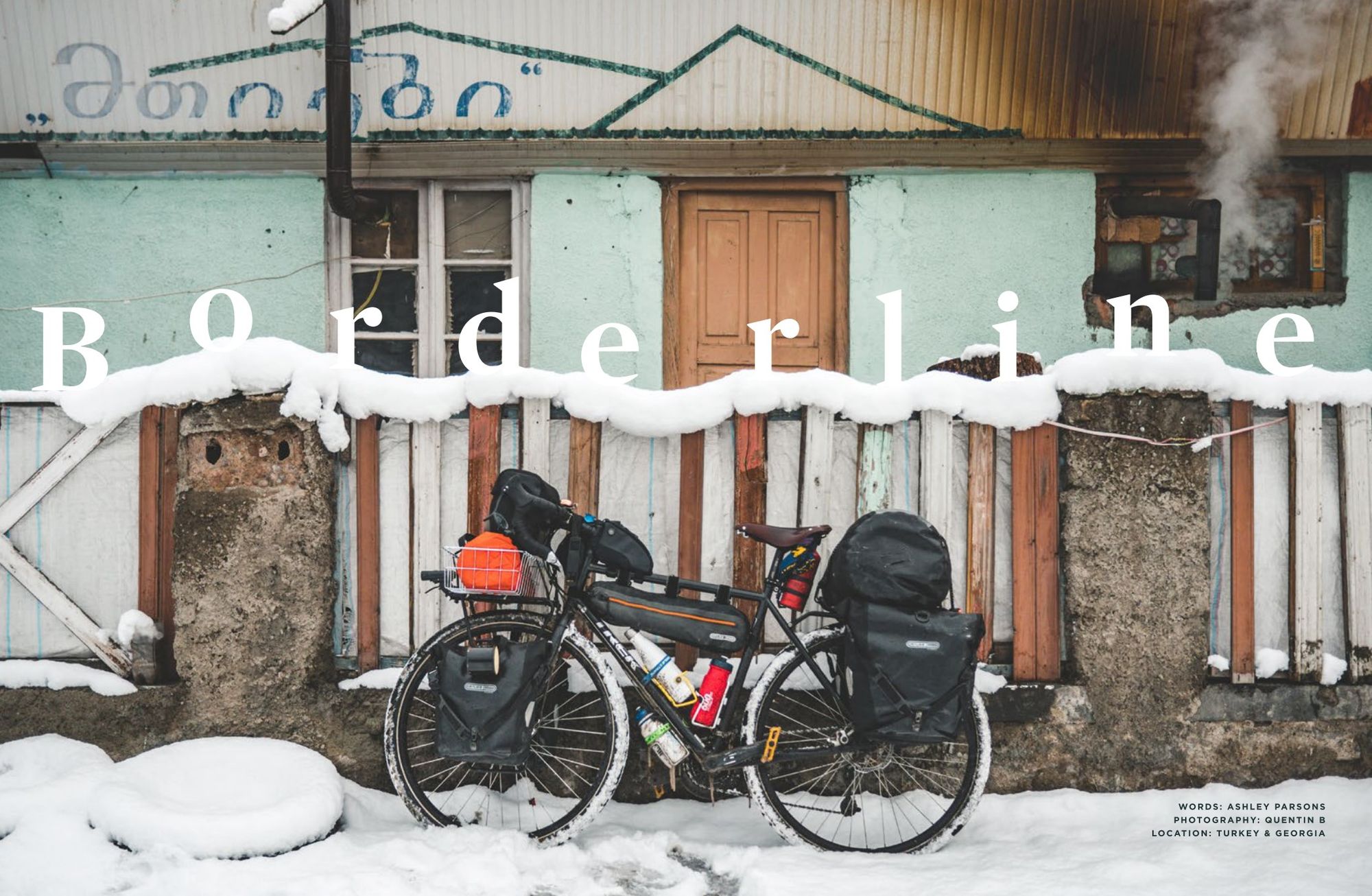
Finally, contributing editor Jenny Tough deserves a special mention here. As an incredibly accomplished long-distance hiker and runner who has completed extraordinary journeys around the world, she is deeper in the world of adventure than any of us on the team, and provided an invaluable perspective on both what our audience needs and the stories that we chose to publish. She also put a huge amount of work into the issue: writing, interviewing, social media, web publishing. Without her hard work John and I would have been overwhelmed.
The Gucci controversy, and that cover design
Let’s address the elephant in the room. Yep, I’m talking about Jared Leto and Gucci x The North Face.
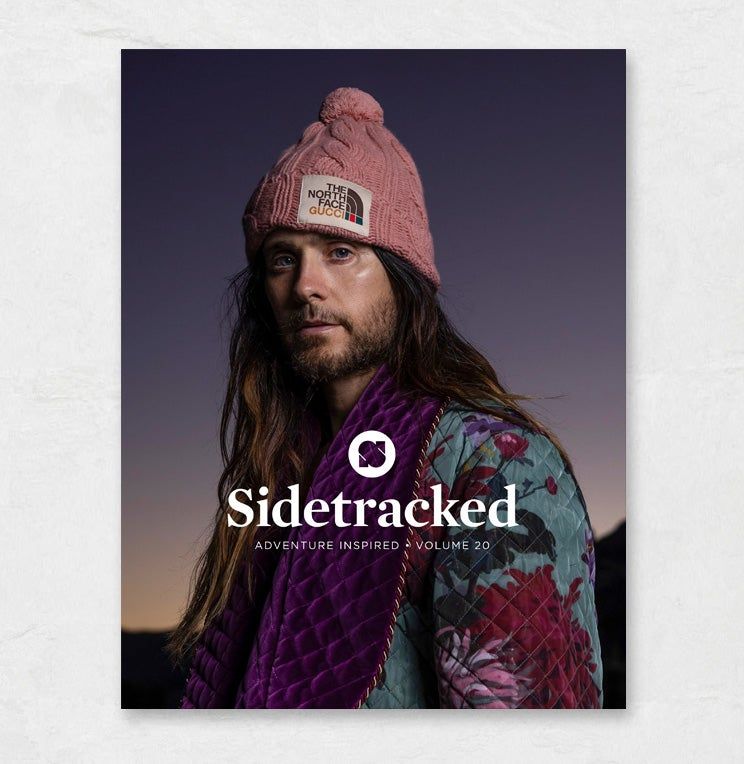
When Gucci and The North Face announced a brand partnership, the reaction on social media was immediate and strongly polarised. Many outdoor enthusiasts expressed astonishment and disgust. When the fashion world touches the world of mountaineering equipment it’s always going to yield strong opinions, but I watched this reaction unfold with mounting unease, because I knew that Sidetracked had agreed to do a partnership with the brands for Volume 20, and I was worried that there would be a backlash. This agreement was made some time before I became editor, but I couldn’t help wondering how it would reflect on me — that my first issue might become defined, in the public’s eye at least, by this fashion collab.
But my own personal views on this collaboration, or the products themselves, are irrelevant. The fact is that magazines require support from brands to survive and thrive, particularly in times of quite literally unprecedented pressure such as these, and I’m not shy about the fact that investment from these brands enables our magazine to pay contributors and colleagues, expand our audience, secure our future, and be more ambitious. Some (though by no means all) other magazines are slashing budgets and fees, struggling to attract advertisers, failing to pay contributors. You can’t have it both ways. This is about taking control of our future and having the audacity to do something different. Sidetracked is known for bold statements like this.
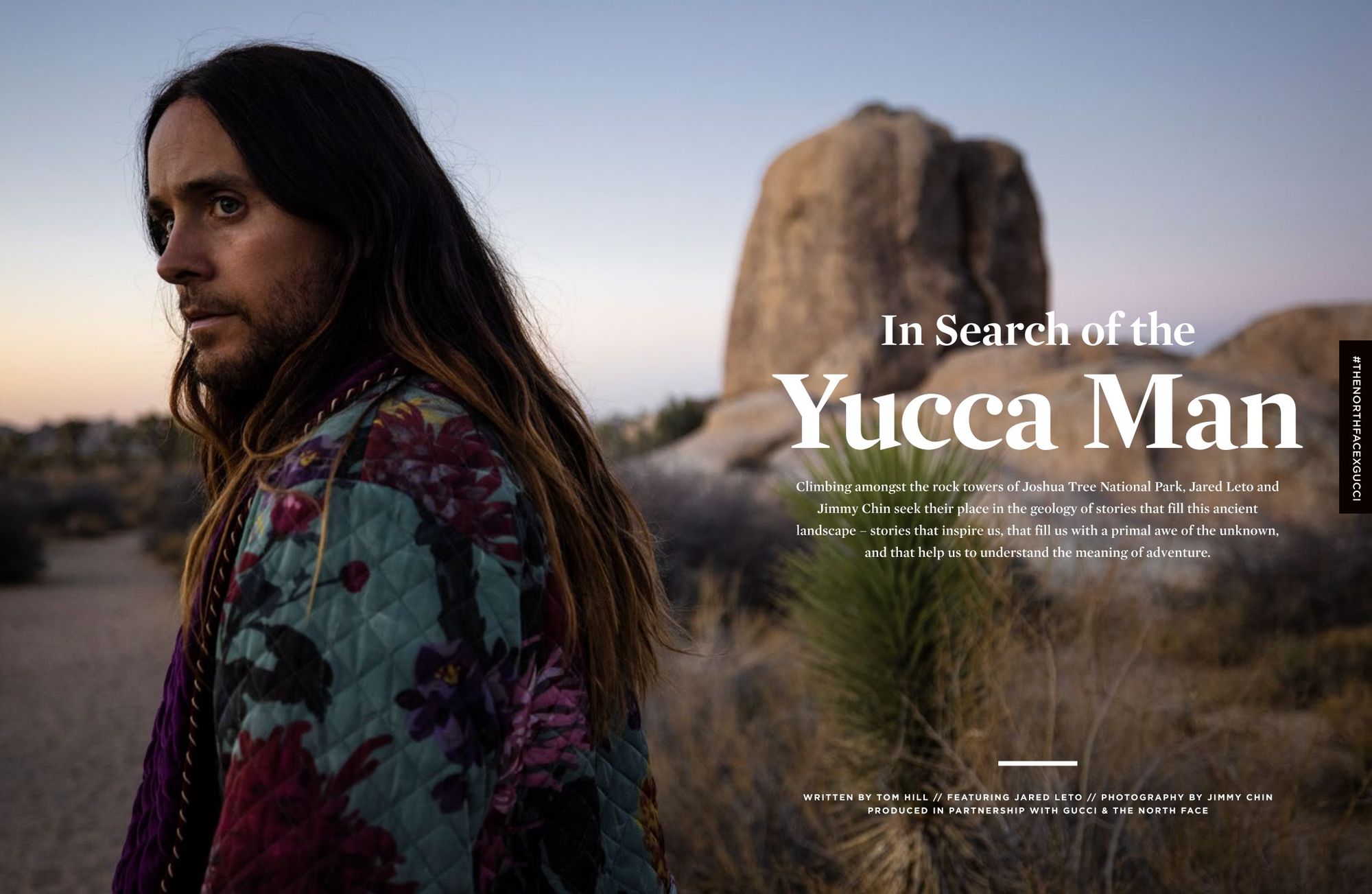
So, after all the fuss and tutting died down, what did we actually do? We arranged a photoshoot with Jimmy Chin and Jared Leto. Jimmy Chin is a famous climbing photographer; Jared Leto is a famous musician and actor. Despite mutterings online, both are in fact highly accomplished climbers, and they’re personal friends too. They went out into the desert and did some climbing. The images were used in a number of ways. Online, we published a few short pieces in partnership with the brand; in print, we used a portrait of Jared Leto wearing Gucci x TNF clothing on the front cover, a DPS advert inside the cover, and one of the online pieces was reproduced near the back of the issue. The rest of the issue is completely untouched by Gucci x The North Face, and to an extent this was a statement about looking beyond the cover and seeing deeper than appearances. It was a deliberate provocation and a challenge in a genre that can be remarkably staid, remarkably conservative, at times.
I needn’t have worried. Yes, there was a bit of a backlash online, mostly from people who had never, or rarely, read the magazine. Yes, some people didn’t like the fact that Jared Leto was on the front cover wearing what some have termed a purple dressing gown. Yes, a prominent climbing writer I won’t name here went out of his way in an attempt to trash the magazine’s reputation on Instagram. Yes, it caused us all on the team a bit of stress and anxiety. However, let’s look at the results: sales of the magazine are up, the artistic integrity of our best issue so far was not compromised in any way (for readers with sufficient maturity to be able to read past the front cover, at least), and we’ve promoted debate.
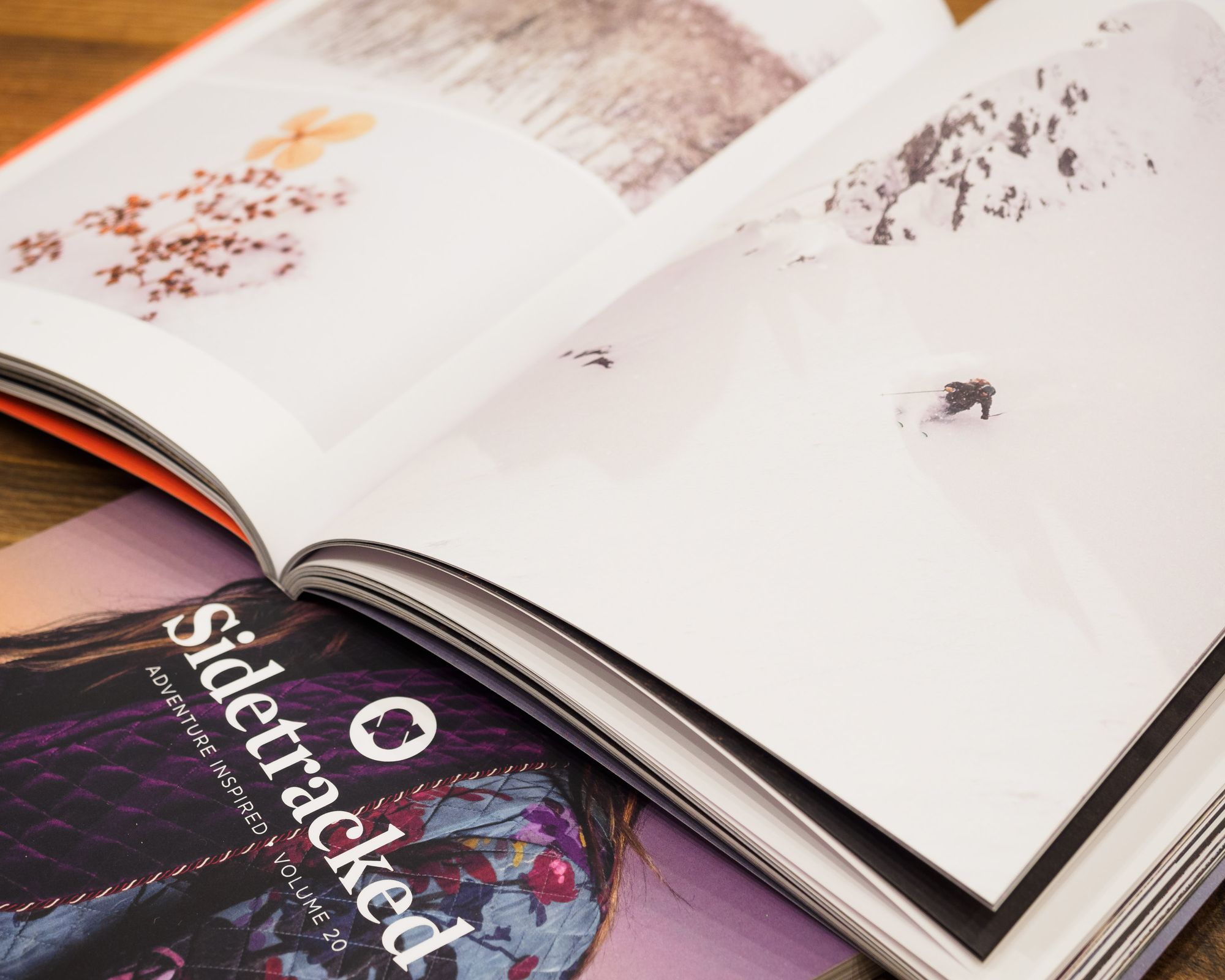
There’s a valid discussion out there about consumerism and adventure media, and it’s one that I have personal views on — but ultimately, when considering a thing that is going to happen, you can either take control and be positive, or you can moan about it. While others moaned and wrung their hands, we got on with our jobs, which is bringing the very finest stories of adventure and exploration to readers around the world. I’m very proud of my part in that role.
Early work has begun on Volume 21. If you’d like to submit a story for consideration, please consult our contribution guidelines — do not contact me directly. Order your copy of Sidetracked Volume 20 here.
Alex Roddie Newsletter
Subscribe here to receive my occasional personal newsletter in your inbox. (For the fun stuff, please consider subscribing to Alpenglow Journal instead!)



